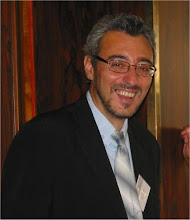
Otto Gericke was born as son of a patrician family resident for three centuries in Magdeburg. Guericke family inherited extensive property both in the city and in the countryside around it. At the age of 15, he entered the Faculty of Arts at the Leipzig University. When Otto Gericke was 18 years old, his father died and in 1621 he went to Jena to study at the university there. To complete his studies, Otto Gericke studied in Leiden (Netherlands) in 1623. In 1626, at the age of 24, Otto Gericke returned to Magdeburg and married shortly thereafter. When Guericke returned home after his education, he was elected alderman of Magdeburg almost immediately, and he served the city continuously over the following fifty years. In 1630, he became city contractor. After the destruction of Magdeburg in 1631, as part of the Thirty Years War, he drew up a map of the city for the Swedish authorities. Since he had lost everything for the moment, Guericke became a military engineer in the army of Gustavus II Adolphus of Sweden, though the locale of the work was mostly Magdeburg, and then when control of the city passed into the hands of the Elector of Saxony in 1635, in his service. In this capacity, and also in his capacity as a magistrate of the city, Guericke played a large role in its reconstruction, both its fortifications and its bridges over the Elbe.
He especially looked into problems of constructing fortresses for which mathematics, mechanics and geometry were the most important subjects. After finishing his studies, he went on a nine months journey through France and England as young men of noble houses were entitled to.
Otto von Guericke proved at last that a vacuum could exist, against the common belief that vacuum was possible. Creating a vacuum was essential for all kinds of further research into electronics and other innovations. Besides being an inventor and a philosopher, Otto von Guericke served as the mayor or Burgermeister of Magdeburg, Germany from 1646 to 1676.
The hand bellows, used by early smelters and blacksmiths for working iron and metals, was a simple type of air compressor and the first pneumatic device. During the 17th century, Otto von Guericke experimented with and improved air compressors. In 1650, Otto von Guericke invented the air pump, used to create a partial vacuum.
In 1657, Guericke carried out his famous demonstration that several teams of horses could not pull apart two joined hemispheres when the air within had been evacuated. Then In 1663, Guericke demonstrated the power of a vacuum with his Magdeburg Hemispheres to Emperor Ferdinand III. During public demonstrations, teams of horses would attempt to pull the hemispheres apart which were held together by the force of atmospheric pressure created using his vacuum pump.
In 1663, Otto von Guericke finished his work "Experimenta nova Magdeburgia de vacuo spatio" ("New Magdeburg Experiments About the Vacuum"), published in Amsterdam 1672. Von Guericke dedicated his Experimenta nova to the Elector of Brandenburg. He received no money for the book because he was known to be wealthy. Guericke used his air pumps for many other experiments including experiments with electricity and magnetism. He proved that a lodestone, or magnet, can attract iron even in a vacuum; and that electrical attraction works in a vacuum as well. Air is needed by neither magnets nor electrics. It is especially significant that air is not needed for electrical attraction.

No comments:
Post a Comment